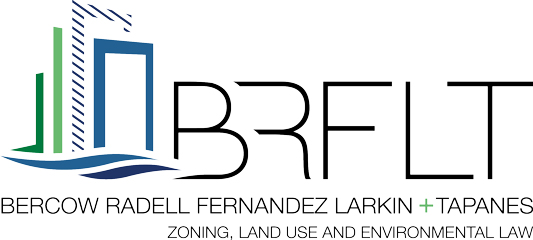CLIENT NEWS: Can Miami Beach Stay Hot After Covid? The Shore Club Redevelopment Might Hold the Answer.
January 31, 2023Architect Robert A.M. Stern is best known for designing buildings for the wealthiest New Yorkers. Some of the largest residential deals in the U.S. have been at his towers overlooking Manhattan’s Central Park. Now, Mr. Stern’s eponymous firm is putting the finishing touches on the design for a Miami Beach project that is seeking to entice those same buyers to the Sunshine State. The project will be the firm’s first oceanfront residential building.
The complex is a pivotal one for the city. It involves the reimagining of the Shore Club hotel, a late-1940s architectural landmark designed in the Miami Modern, or MiMo, style by Albert Anis, and the Cromwell Hotel, a 1930s Art Deco building, as well as a new tower. Prices will start at around $6 million and top out at about $40 million, excluding the penthouse, said Alex Witkoff, co-chief executive of developer the Witkoff Group, based in New York. Sales of the units are expected to begin later this month.
Industry insiders say projects like the Shore Club will be a litmus test for whether the Covid-sparked Miami property boom, which drew wealthy Northeasterners to Florida, has legs beyond the pandemic. More important, it will show whether the Miami area, known for its dramatic boom and bust cycles, has transformed itself from a vacation-home market for the international jet set into a more sustainable primary-home market that appeals to the affluent—and can command prices akin to those in New York.
Miami Beach Mayor Dan Gelber said he believes projects like the Shore Club speak to a new era of Miami Beach and to how the beachfront area on Collins Avenue, where the project is located, has “caught fire.”
“First there was the Coppertone-girl phase, then the ‘Miami Vice’ phase. Now, we’re in the Art Basel phase,” he said with a laugh, referring to a 1960s ad campaign, a popular 1980s television show and the current international art showcase. “We have matured. We have reached a tipping point.”
For years, the project was the “will they or won’t they” saga of South Beach. The 3-acre oceanfront parcel cycled through various owners and went through a legal battle over a foreclosure. In 2017, a redevelopment plan by embattled New York development firm HFZ Capital Group fell apart amid the market slowdown. The hotel then closed when the Covid-19 pandemic hit in the spring of 2020. But when real estate started on the upswing, the Witkoff Group and its partner, Monroe Capital, hatched plans to redevelop the site.
The new project will include a five-star resort, to be known as Shoreclub and operated by Auberge Resorts Collection, 49 private residences, most split between the upper floors of the original Cromwell Hotel, which is being refurbished, and a new adjoining 200-foot tower designed by Mr. Stern’s company. The new tower replaces one by the architect David Chipperfield. There will also be a 6,000-square-foot, single-family mansion on the site facing the beach, also by Mr. Stern’s company.
Neither the home nor the penthouse has been priced, Mr. Witkoff said. The penthouse will be about 10,500 square feet with an additional 7,500 feet of terraces and a private rooftop pool, he said.
The design for the project is a departure from the limestone and ornamental filigree that are the hallmarks of the Stern team’s iconic New York buildings. The curvy look was inspired by the waves lapping the beach, said Paul Whalen, Mr. Stern’s business partner. The interiors are yacht-inspired and have a color palette of dune, coral and sky. Also, the apartments are larger than has been typical of Miami, with more storage, Mr. Whalen added. Mr. Stern’s firm is collaborating on the project with local firm Kobi Karp Architecture & Interior Design.
 Mr. Stern said he drew on movies like “The Gay Divorcee,” a 1934 musical starring Fred Astaire and Ginger Rogers, to get a feeling for the Miami period in which the original Shore Club was built, infusing some of that fun and optimism into his design. He also drew on architectural elements of the Art Deco and MiMo periods.
Mr. Stern said he drew on movies like “The Gay Divorcee,” a 1934 musical starring Fred Astaire and Ginger Rogers, to get a feeling for the Miami period in which the original Shore Club was built, infusing some of that fun and optimism into his design. He also drew on architectural elements of the Art Deco and MiMo periods.
The project speaks to three periods in Miami Beach architecture, he added, and being in the tower should be like traveling on a great cruise ship. “Many of the new buildings in Miami Beach are like office buildings with hotels inside of them,” Mr. Stern said. “We wanted to create something that updated the work of the 1930s and 1940s but avoided the abstract, kind of corporate quality of too much recent work.”
The history of the Shore Club, originally built in the 1930s as a beachfront cabana for the Cromwell, then reconstructed in 1949 after it served as an army training command site in World War II, speaks to the evolution of the Miami Beach area, said Daniel Ciraldo, executive director of the Miami Design Preservation League.
The pool was so popular for its size and location that it became a gathering spot for professional swimmers in the 1950s and 1960s, said local historian and author Seth Bramson. Olympic swimmer Walter Spence was the pool manager and swimming instructor there, he said.
In the early 2000s, the Shore Club was credited with helping to reignite the fine-dining scene at area hotels with its opening of Nobu, a celebrity hot spot that drew stars such as Robert De Niro, a part owner of the restaurant brand, and Madonna.
The Collins Avenue strip where the hotel is located has been redeveloped over the past two decades from a dilapidated corridor into one with high-end hotels like the SLS South Beach, the Setai and the W. In 2015, a pair of penthouses at the nearby Faena House condominium complex sold for $60 million to hedge-fund billionaire Ken Griffin, setting a Miami-area sales record.
By 2019, the market had cooled significantly, despite tax reforms that were expected to make Florida an attractive option for buyers. Some who purchased at record prices at Faena had to sell at a loss.
“I remember after the SALT tax came through, the brokerage community was expecting everybody to load up their trucks and move to Miami,” said appraiser Jonathan Miller. “They were disappointed. Remote work becoming ubiquitous during the Covid lockdowns was actually what got people off the fence about moving.”
Mr. Griffin has since come to epitomize the Miami transformation narrative. In addition to buying hundreds of millions of dollars of personal real estate in the area, his firm Citadel is one of a string of major companies that have relocated there from other parts of the country.
Now, Miami Beach condo developers are betting on renewed demand for high-end projects. New projects include the Aman Miami Beach and the redevelopment of the historic Raleigh Hotel by a group headed by New York City-based developer SHVO. There is also Perigon, a 73-unit condo project by Mast Capital and Starwood Capital Group. Other condo projects in Miami proper will follow.
The Shore Club project comes with its share of challenges. Witkoff and Monroe are fighting a lawsuit by a former partner in the project who alleges being illegally cut out of the ownership through a “crooked and secretive land grab.” The partner, tied to the family of the late newspaper publisher and businessman Stephen Carlton Clark, is requesting $125 million in damages. A spokesman for Witkoff called the allegations “unfounded” and said the company was “highly confident” the suit would be dismissed. An attorney for the Clark partner didn’t respond to a request for comment.


Witkoff and other developers also are testing the limits of the Miami market at a time when luxury sales have slowed significantly across the country from their 2021 heights. “There’s no doubt that the pandemic sense of urgency has faded,” said Jay Parker of Douglas Elliman Development Marketing, the company leading sales at the Shore Club. “When you have a cryptocurrency implosion, a stock-market retraction and rising interest rates affecting the market, it’s hard for buyers to justify pulling the trigger.”
Still, he said he believes the fundamentals of the market are still in Miami Beach’s favor, thanks to low inventory and a fresh influx of wealthy Northeasterners.
Mr. Miller said there was a condo supply of about five to seven years coming to market in Miami before the pandemic that has dropped to about eight months. In Miami Beach, listing inventory was down by about 58.5% in the third quarter of 2022, compared with prepandemic. About 64% of buyers have been paying all cash, he said, compared with about 55% in New York.
“The pandemic was very good in a real-estate sense to the excess supply that Miami seemed to be perpetually plagued with,” he said. “In Miami, New Yorkers are the new foreign buyers.”
















































